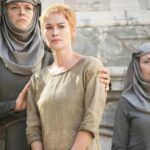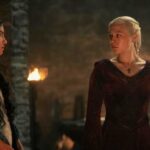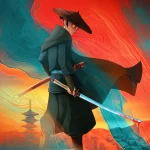In 47 days, Game of Thrones will finally return. And 35 days after that, Thrones will end. In less time than it seemingly took Littlefinger to zip around to every corner of Westeros, showrunners David Benioff and D.B. Weiss will deliver a conclusion to the story George R.R. Martin first introduced 23 years ago—and in that precious time they’ll have to answer half a hundred pressing questions: Who will live? Who will die? Who will tell Jon he’s doing it with his aunt?
Separate from those series-shaping questions are countless smaller but still crucial details that the show may or may not explore in the final season. These are Thrones’ loose ends: the characters, places, events, prophecies, and more that the story has made audiences wonder about over the past seven seasons but the show has yet to wrap up. In the run-up to the final season’s April 14 premiere, we’ll be digging through these loose ends, looking at why they matter and how they could affect the endgame as we count down to Thrones’s long-awaited conclusion.
The Loose End
Howland Reed has barely appeared on the show, and never in the present-day timeline, yet he may be one of the most important characters in the story. He was Ned Stark’s good friend and bannerman, and fought alongside him in Robert’s Rebellion and saved Ned at the Tower of Joy by stabbing Ser Arthur Dayne—the legendary Sword of the Morning—in the back:
Howland is also the father of Jojen and Meera Reed, the siblings who led Bran to the Three-Eyed Raven. Jojen—who possessed the greensight that granted him prophetic dreams—helped Bran learn how to harness his powers as a greenseer, while Meera protected the group as they journeyed north. Jojen died in Season 4 while helping Bran achieve his destiny, while Meera sacrificed nearly everything before Bran, the new Three-Eyed Raven, coldly said farewell to her last season.
Howland, meanwhile, remains at Greywater Watch, the mysterious seat of House Reed. His bond with Ned was incredibly strong. Jojen said that the only time he saw his father cry was when he told Howland that he’d seen Ned’s death in a green dream. The Starks and Reeds are intertwined. And yet Howland has only appeared to us in Bran’s visions of the past. George R.R. Martin once said Howland knows “too much” to ever be a point-of-view character in the books. But what does he know? And how might that knowledge impact the final season?
Why This Loose End Matters
Howland doesn’t just save Ned—he’s the only person beside Ned or Jon who survived at the Tower of Joy. With Ned dead, that means he’s the only person in Westeros who may have known about Jon Snow’s true parentage before Bran figured it out in Season 6 and told Sam in Season 7 (and Sam shared his knowledge about Lyanna and Rhaegar’s marriage, which Howland may not be aware of). For a long time, fans obsessing over R+L=J viewed Howland as a prime candidate to reveal Jon’s parentage to him. That technically could still happen, but it seems more likely at this point that Bran or Sam will have to awkwardly share that update with Jon.
But Howland may know many more secrets than who Jon’s biological parents are. His backstory from the books indicates he may have an understanding of magic, including the Children of the Forest and the White Walker threat facing Westeros.
In the books, when Meera, Bran, and Jojen are traveling toward the Wall, the Reed siblings tell a story about a crannogman—the term used for the small, slender people who reside in the swamplands of the Neck—who visited the Isle of Faces some decades before the current events of the books and show. It’s heavily implied that this crannogman is Howland, and Jojen and Meera’s telling of this tale is a crucial look at their father’s backstory.
The Isle of Faces is a mysterious but incredibly important place in Westeros. It lies at the center of a lake called the Gods Eye, just south of Harrenhal, and is where, thousands of years before the show, the Children of the Forest and the First Men forged the Pact that ended centuries of fighting between the two species. On the island, a face was carved into every weirwood tree so that the gods could witness the Pact, and a mysterious order called the green men was formed to protect the Isle of Faces and guard the weirwoods remaining in the south. Those weirwoods still exist on the island today, as do the green men, though they are in near-isolation from the rest of Westeros, as most other weirwoods south of the North were cut down both before and after the Pact. Those who attempt to visit the island are driven back by strong winds and packs of ravens—but “the crannogman” (it’s clear Meera is talking about her father here) was able to paddle a small boat to the island and sojourn with the green men in his youth.
No one knows much about the green men, as evidenced by the wild rumors about them that float around Westeros. They are said to have dark skin and horns, though most maesters believe that they simply wear green clothes and helms with antlers. Some maesters also think that some of the Children of the Forest still live with the green men on the Isle of Faces, protected by the order. The green men and the Isle of Faces occupy a central place in ancient Westeros history, and they seem to have a strong link to magic. Yet no one knows what the green men—and the Children who may or may not accompany them—actually do. No one, that is, except for perhaps Howland Reed.
According to Meera and Jojen, Howland stayed on the Isle for an entire winter—which, remember, can last years in Westeros—before leaving to observe the now infamous Tourney at Harrenhal. As Howland arrived at the tourney fields, the slender crannogman was attacked by a group of squires. Suddenly, Lyanna Stark appeared to defend Howland, driving away the squires with a tourney sword. Soon after the young lord of the swampland met Ned and his brother Benjen as well, and when the tourney began, a mystery knight with a laughing tree on their shield entered the jousts to challenge the three squires who attacked Howland. The knight, who was described as being rather small of stature, defeated the three squires, but never revealed their identity.
Some fans speculate that the Knight of the Laughing Tree was Howland himself, seeking revenge. But many others think it was Lyanna, joining the lists to defend the crannogman once more. If it was Lyanna, that would explain why Howland felt the need to journey south to find her with Ned, risking his life for the woman who defended him. Whoever the mystery knight was, that tourney was when Howland and Ned began their friendship, and also when Rhaegar Targaryen, who won the tourney, stunned the realm by riding past his wife, Elia Martell, to instead name Lyanna the queen of love and beauty by placing a crown of winter roses on the Stark Lady’s lap. It wasn’t long after that fateful tourney that Howland rode south with Ned to the Tower of Joy.
Howland returned to Greywater Watch at the end of Robert’s Rebellion and he has remained there ever since. He resides there as lord of the crannogmen. Many of Westeros’s citizens derisively call the crannogmen mudmen or frog eaters, and some believe that their small stature is the result of intermarriage with the Children of the Forest, though it’s more likely a result of a diet based around lizards and fish.
The crannogmen do seem to be wise to magic in a way other humans in the series are not, as in the books Meera tells Bran that Howland “learned all the magics of my people” and “could breathe mud and run on leaves, and change earth to water and water to earth with no more than a whispered word. He could talk to trees and weave words and make castles appear and disappear.”
That leaves some connection between the crannogmen, the green men, and the greenseers: All of these groups are secretive, have some rumored connection to the Children of the Forest, and are possibly privy to magic. Howland is the thread that ties the crannogmen, the green men, and the greenseers together.
As he sits in Greywater Watch—a difficult-to-locate castle built on a floating island that moves through the bogs of the Neck—Howland seems to be one of the few characters in the series who appears to have some perspective on the threats facing Westeros. He is a Stark bannerman, and yet when Robb calls his banners to march south in the War of the Five Kings, Howland does not join in. Instead of helping avenge the death of his close friend Ned by adding forces to Robb’s army, Howland sends his only two children north to find Bran and lead him beyond the Wall. What would possess the lord of the crannogmen to send his only two heirs to the most dangerous place in the world?
When Jojen and Meera meet up with Bran, Rickon, Osha, and Hodor, Jojen tells Bran they came to help “the only one thing that matters: you.” Jojen and Meera understand that Bran must become the Three-Eyed Raven for Westeros to be saved. Howland, it stands to reason, must share in this understanding, and his actions—or lack thereof—while his children are away point to his perspective.
Over and over again, Howland remains out of the conflicts that have defined so much of Game of Thrones. When Theon takes over Winterfell, Howland does not come to the aid of the Starks. When the Boltons take over the North, Howland remains in his castle. There are terrible crimes being committed right under Howland’s nose—against his closest friend’s family, no less—but Howland seems to understand that there are larger problems that will soon need to be dealt with. (And that he sends his children to aid Bran but not Jon may speak to Bran’s relative importance in the endgame in relation to Jon, one of our prime candidates to be The Prince That Was Promised.)
Now, the Wall has been torn down and the Night King marches on the realm of the living. If there was ever a time for Howland to act, this is it.
How Season 8 Could Address It
Howland’s Moving Castle is difficult to find and impossible to reach by raven, which may partially explain why Howland and his bannermen remain so absent for so much of the story: Without Jojen’s green dreams, he simply may not know much about what is happening outside his walls (in the books, Meera specifies that Howland does not possess the same green sight as his son). News likely reaches Howland late, though even the bits of info that do trickle in (like Ned’s death) don’t regularly stir the lord of the crannogmen to action.
In Season 7, Meera leaves Winterfell to return home and tells Bran that she needs to be with her family when the White Walkers come. When she gets to Greywater Watch, she’ll have a lot to relay to her father: Jojen is dead, Bran is the Three-Eyed Raven, and Westeros faces an apocalyptic threat. Meanwhile, when Jon learns of his true parents, he would benefit from a credible third party who could confirm his identity to the realm—that could be only Howland.
When Howland gets a firsthand account of the White Walkers and hears that the true heir to the Iron Throne is helping lead the resistance against them, will he finally leave his swamp and do something?
Disclosure: HBO is an initial investor in The Ringer.


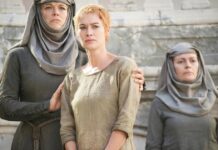
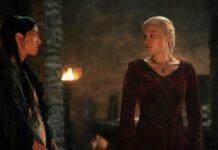
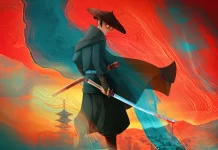














![[Book Review] The Blade Itself (The First Law Trilogy) by Joe Abercrombie](https://bendthekneegot.com/wp-content/uploads/2018/01/1516047103_maxresdefault-218x150.jpg)







